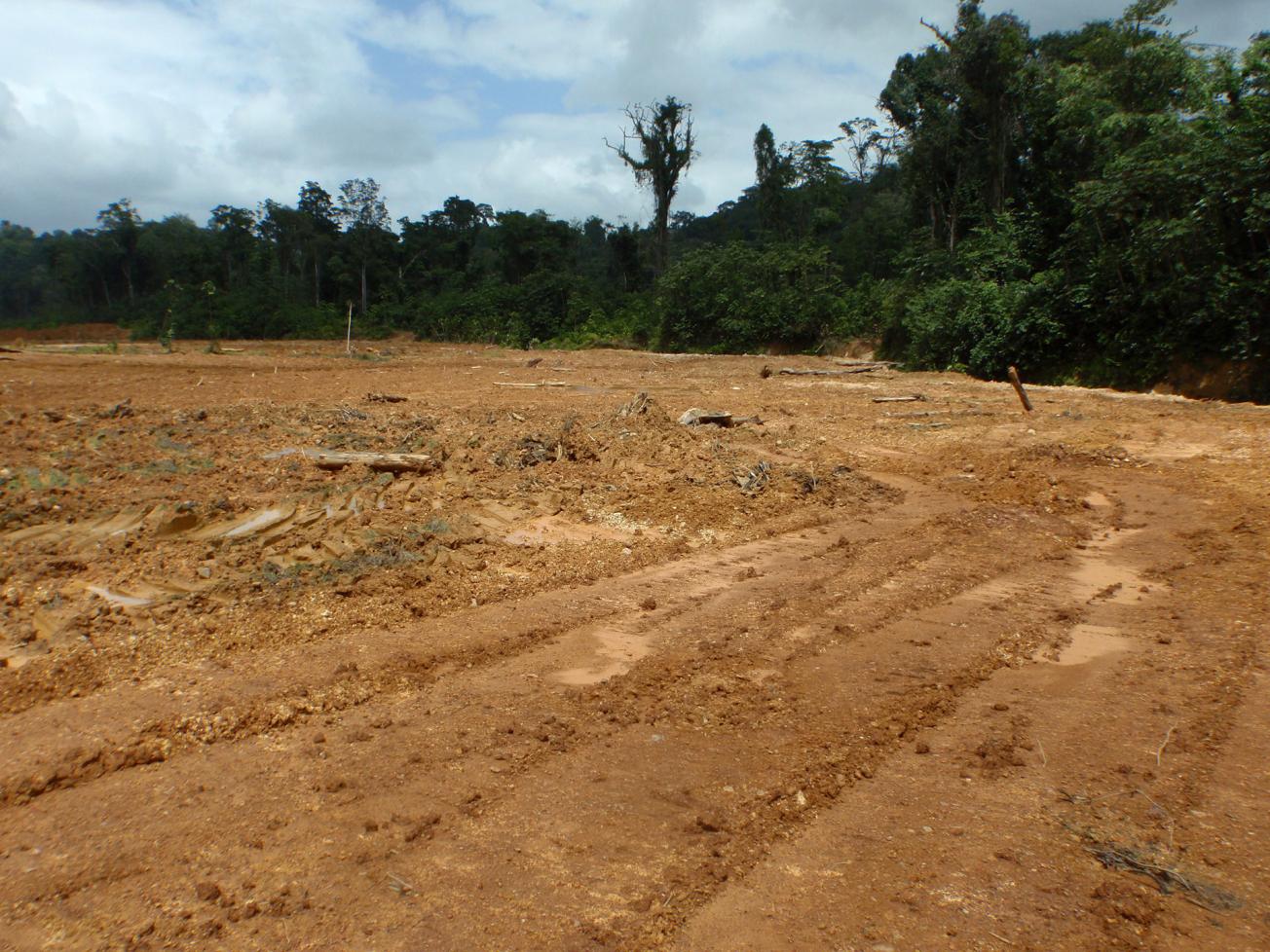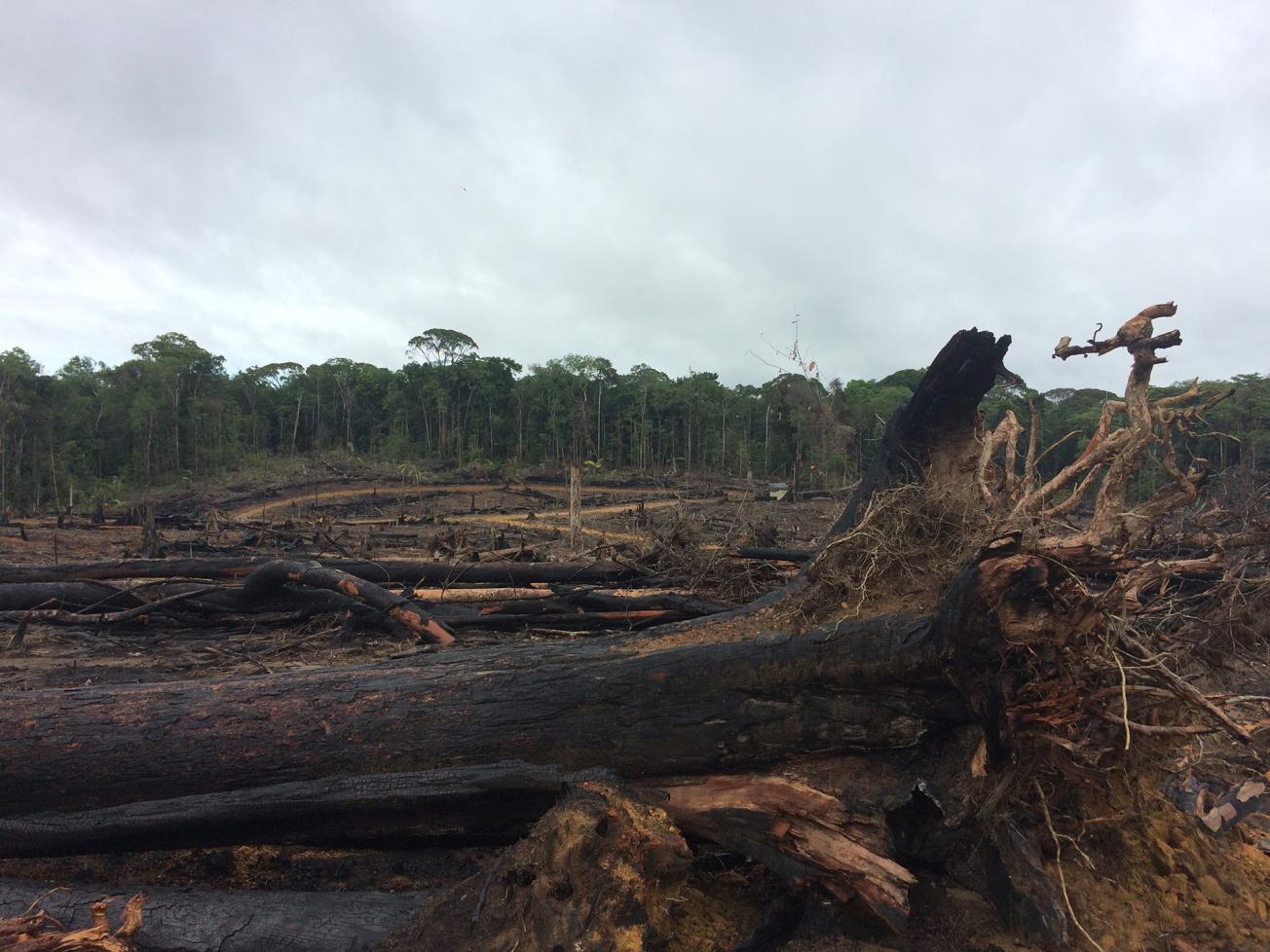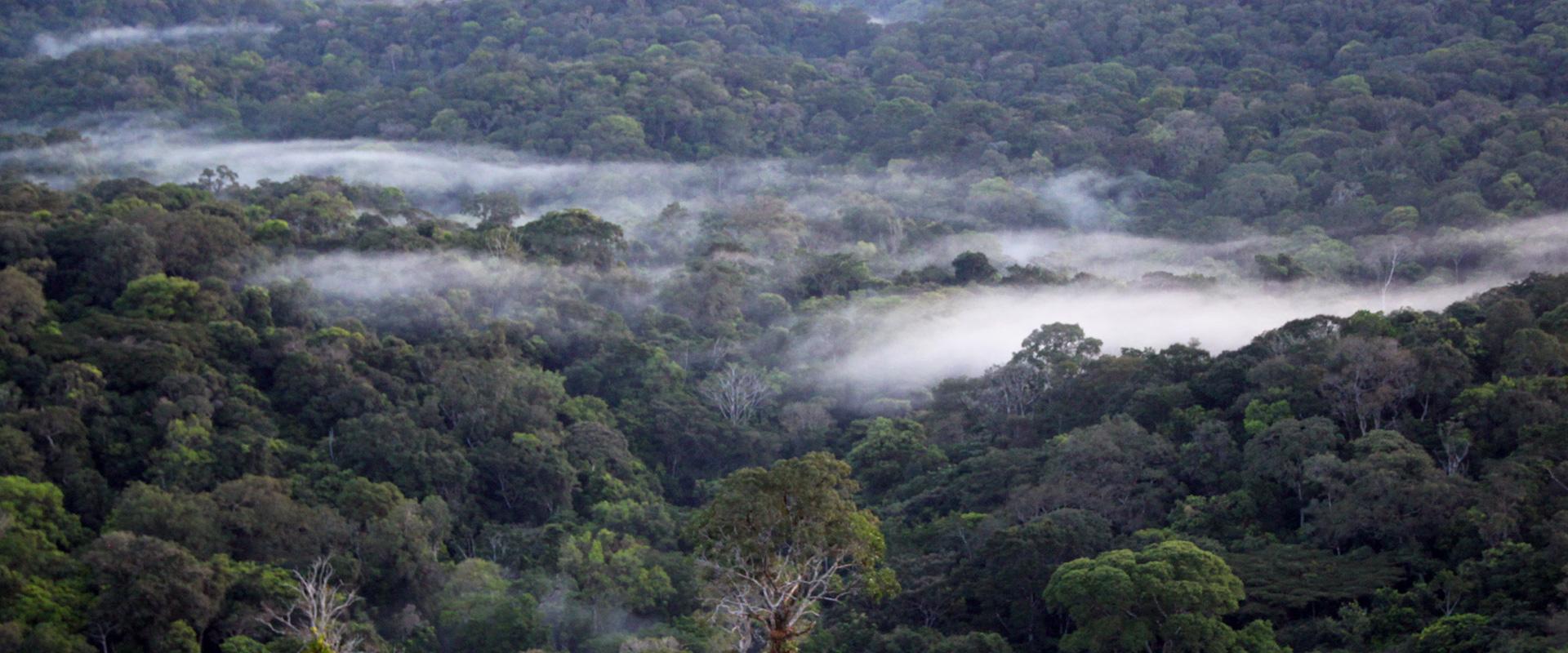
Mining area after soil remediation (French Guiana).
© BRGM - Nicolas Brisset
The need
Potential sources of mercury directly related to soils and sediments are both natural (leaf litter, sediments and colloids) and anthropogenic (mercury of historical and current anthropogenic origin and release of natural mercury). Any disturbance of the soils in French Guiana leads to the release of mercury from the soil into water. Depending on the agricultural or mining context, mercury can be transferred from one environment to another but also transformed, i.e. it can be oxidized (Hg0 to Hg2+), reduced (Hg2+ to Hg0) or methylated/demethylated with formation of monomethylmercury (MMHg), a bioaccumulative neurotoxin in the food chain. It is therefore important to identify disturbances that have an impact on mercury release, and also to identify areas and actions that may produce MMHg.
The results
In an agricultural context, turbidity values (content of turbidity-inducing materials in a fluid) do not increase after felling of trees. It is only following the burning stage, during the short rainy season, that turbidity increases. Numerous studies have shown the impact of the transformation of forest soils into agricultural soils by the slash-and-burn technique; this causes soil erosion and the movement of fine particles into rivers. At the time of burning, reactive mercury (HgII) concentrations increase sharply (from < 2 ng/L to > 8 ng/L; note that the quality limit for drinking water is set at 1 microgram per litre). In addition, there is an increase in dissolved MMHg as well as in the percentage of MMHg in relation to total Hg (HgT), especially downstream and with a time lag, after which the increase seems to persist. This is entirely consistent with the fact that mercury is released during the burning and then methylated over time. It is difficult to predict how long this increased methylation may last.
In the mining context, Hg2+ concentrations in suspended solids (SS) are less than 0.3 mg/kg (which can be compared to the national threshold of 0.1 mg/kg dry matter, the chemical quality required for the use of excavated soil in a development project in mainland France) and conditions are not favourable for methylation (no “A” horizon rich in organic matter).
On the other hand, there is an increase in turbidity at each rainy event and/or at each activity on the site (remediation and gold panning). The definite impact of remediation on erosion and the load on the watercourse of suspended solids argues in favour of remediating soils as soon as possible after the cessation of operations in order not to disturb an ecosystem for too long.

Burnt area in Montsinéry (French Guiana).
© Laura Bechelen
Using the results
In view of these findings, it seems important to add HgT as well as MMHg to the list of substances to be monitored specifically in French Guiana within the framework of the WFD. This would allow the "baseline level” of these Hg values to be determined and an anomaly to be easily detected.
The partners
- DEAL
- OEG
- AFB







